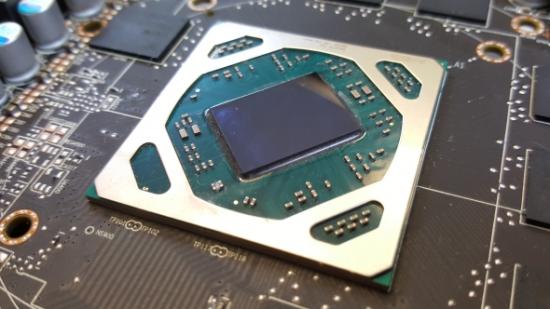The recently released embedded Polaris silicon offers around a 50% improvement on their performance per Watt over the desktop chips. That would be good news for AMD’s upcoming mobile GPUs and might even make for higher performing desktop cards too.
Find out what the best graphics card is for every budget with our in-depth guide.
At the end of September AMD released their embedded graphics card range for the business market featuring their latest Polaris 10 and 11 GPUs. These are small form factor designs to go in boring ol’ digital signage or morally questionable gamble-o-tron casino machines. Specs-wise the E9950 and E9260 are almost identical to the RX 480 and RX 460 cards we’ve seen in our desktop rigs; with the same memory, clock speeds and GCN core counts, but with significantly lower power requirements.
The RX 480 has a 150W TDP and the RX 460 around 75W while the equivalent embedded chips have power targets of just 95W and 50W respectively. The expectation is that aggressive bin-sorting of the GPUs themselves and improvements to the 14nm manufacturing process have allowed this performance per Watt improvement for the energy-conscious segments of AMD’s business.
The embedded silicon is installed on mobile-focused MXM modules (the boards used in high-end gaming laptops) instead of the standard PCIe cards we use in our machines, and because they’re often squeezed into cramped confines they need to run a lot cooler, hence why the lower TDP is so necessary.
And because they’re already installed onto MXM modules it stands to reason that these embedded cards should also form the basis for AMD’s next assault on the mobile gaming market too. At the launch of the RX 460 they promised a laptop GPU that was functionally identical to the desktop part, and the E9260 looks to be the forebear of that mobile silicon.
On the desktop though we’re not so concerned with low-power graphics when we can have higher frame rates, so if the performance per Watt improvements could follow a desktop refresh it’s possible that extra efficiency could deliver speedier gaming performance at the same TDP as the previous generation. AMD have produced a PCIe-based version of the E9260 though, so the precedent exists.
That’s why there have been rumours this refined process could also pave the way for a full desktop refresh of the AMD Polaris range of graphics cards early next year. That would coincide with the launch of their new Vega GPU architecture, with the refreshed Polaris cards filling out the lower order of a new lineup of graphics cards.
If the AMD Vega silicon is going to appear as a new Radeon RX 500 series instead of as a range-topping RX 490 then it may follow that revised Polaris 10 and 11 GPUs would fall into line to form the rest of the RX 500 series of cards in 2017.
